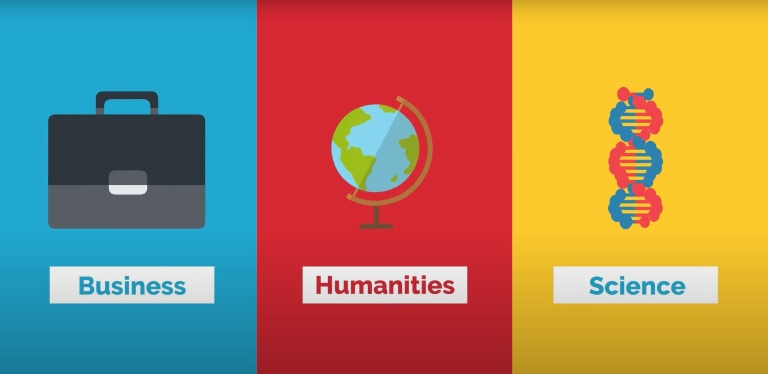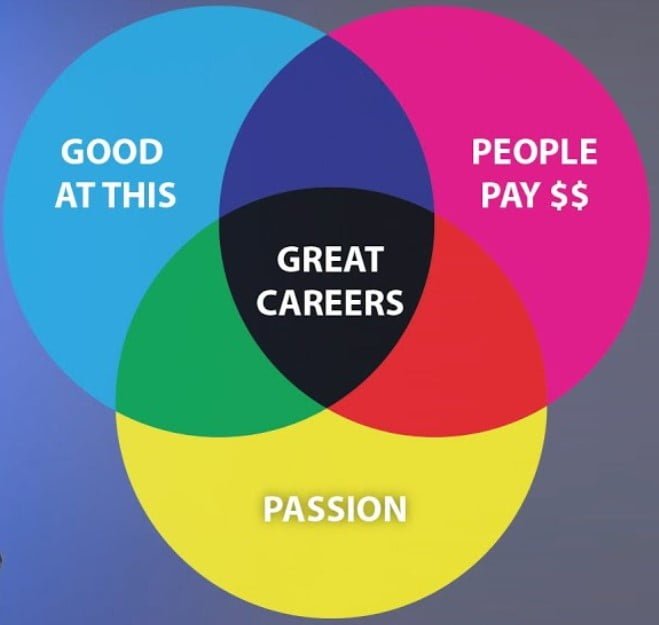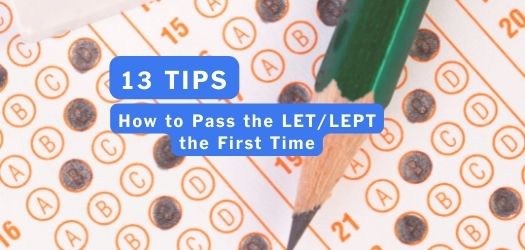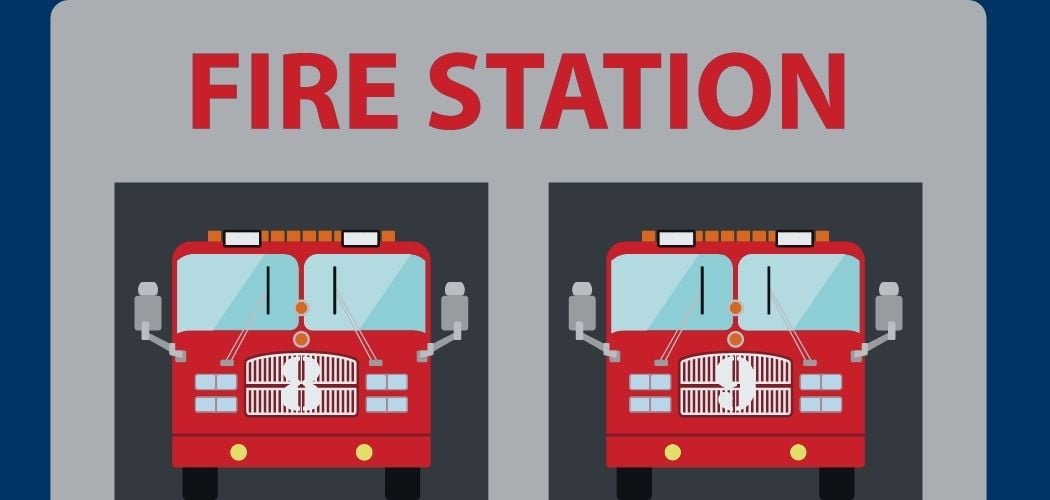So you’re ready to go and about to become a senior high school when suddenly you’re asked what strand you want to pursue.
What if you don’t know?
You’re not alone. Most junior high school students are undecided about what program to take in their senior high school. We’ll help you narrow it down.
But first, know this: your strand does not define you nor does it limit your future. The truth is, the majority of employers are more interested in the skills that you will gain.
Finishing your SHS demonstrates your ability to think critically and solve problems. Two of the top skills that employers want.
It also shows employers that you’re a self-starter and that you can work with others. It shows that you can manage your time and follow through.
Overview
In 2011, the Department of Education made the historic implementation of shifting from the 10-year basic education curriculum to the Kinder to 12 Program (K-12) in phases.
Senior High School (SHS) is the last two years of the K to 12 program that includes Grades 11 and 12. This additional two-year senior high school education aims to equip you with knowledge and skills that will help you prepare better for your chosen path—be it higher education, employment, or entrepreneurship.
Areas of study
About that strand or track, you still need to determine the program you want to study in your senior high school. With that in mind, let’s look at three broad areas of study: business, humanities, and sciences.

Business
Business-related strands—think of Accountancy, Business, and Management (ABM)—are popular in part because it’s easy to connect these programs with job titles.
Most businesses rely on professionals to help with finances, human resources, and management. These are all areas you can major in college and taking a business-related strand during your senior high school will certainly help you with that.
If you like the idea of working in an office or corporate setting, a business-related strand is a perfect choice for you.
Humanities
But don’t discount humanities. This is a more holistic strand. Expect a thorough study on subjects like English, History, Psychology, and Sociology.
These majors may seem a little more ambiguous when it comes to a career but the truth is, they are in high demand across a variety of industries.
Some of the top CEOs earn degrees in humanities. This includes the CEO of YouTube. That’s because programs in humanities make you think in new ways which can then open up an entirely new world.
If you’re a creative thinker who wants to imagine new possibilities, consider the humanities strand.
Science
If you’re more interested in our physical world, consider a strand that includes sciences. Expect a program to be heavy in subjects such as biology, chemistry, and environmental studies.
These are all subjects that can lead to work in agriculture, conservation, and health care. They can also be a stepping stone for those who want to go to medical, veterinary, or dental school.
Sciences can also include computer-related fields. These are great majors for people who want to work with technology, databases, information system, and networking.
How to choose the right SHS strand
There’s a lot of bad advice about choosing a major, but here’s a model that can help you choose the right strand or track. You’d be very happy with the direction it takes so here it is:

What we have is an overlap of what you’re good at, what career opportunities are out there, and the things you’re passionate about. In the middle is the refined option and is the very best choice that you can get.
Interest
When deciding which strand to pursue in senior high school, think about what you’re truly interested in studying. Couple your abilities, personality, and strength with those interests.
Skill
Select a program knowing that you’ll learn skills that many jobs will require. See what are in-demand career options. If you’re like most people, your future job—or college degree—may not be directly tied to your senior high school strand.
Passion
Your chosen track or strand will help you pursue your passions and jumpstart your career in the future. And whatever it is, choose a school that is ready to provide you with a creative and innovative environment to nurture your talents and potential
Academic track
This track is for students who are planning to go to college. Each strand will have a subject specialization that will help students in college courses in the future.
Speaking of strands, you have four (4) strands that you can choose from:
- Science, Technology, Engineering, and Mathematics (STEM)
- Accountancy, Business, and Management (ABM)
- Humanities and Social Sciences (HUMSS)
- General Academic Strand (GAS)
STEM
The STEM strand is for SHS students who are interested in various interdisciplinary fields of science, technology, engineering, and math.
STEM strand jobs
These are some jobs you can take in the future under the STEM strand:
- Nurse/Doctor
- Engineer
- Architect
- Pilot
- Scientist
Two effective ways to pass STEM
- Listen attentively in class. Self-explanatory enough but this subject deals with advanced topics. You would have a hard time having to understand these concepts on your own therefore fight your sleepiness and listen to your teachers! It would save you the extra hours trying to understand a formula on your own.
- Understand the formulas and concepts. As tempting as it is to memorize the concepts given, you wouldn’t know how to use them if you did not understand them!
ABM
The ABM strand is for SHS students who want to focus on topics revolving around business and finance-related courses. Important terms relating to this strand include business, accounting, entrepreneurship, management, and many more.
ABM strand jobs
ABM strand can land you a job in any of the following fields:
- Accountant
- Bookkeeper
- Entrepreneur
- Advertising Professionals
- Financial Advisors
Two effective ways to pass ABM
- Think like an entrepreneur. At some point, you’re gonna have to create your own business and so think and act like an entrepreneur and be creative! This applies not only to your product or service but to the entirety of your proposed business!
- Critical thinking skills over numbers. You would think that you have to be good in math to pass this strand. Nope! You would need to enhance your critical thinking skills more through listening to your teacher attentively, reading a lot of notes, and understanding a concept before using it.
HUMSS
The HUMSS strand is for students who like to think and understand outside of the box. It utilizes your understanding, communication, and reflection skill, turning the nuts and bolts in your head.
HUMSS strand jobs
Consider this strand if you want a job in any of the following lists:
- Teacher
- Lawyer
- Psychologist
- Police
- Journalist
Two effective ways to pass HUMSS
- Practice expressing your thoughts. When taking HUMSS, there will be a lot of writing and presenting activities that require you to understand and reflect on a certain topic. Practice doing this either through writing your own journal, being participative in class, and vocalizing your own thoughts and opinions.
- Challenge your thoughts. Be open-minded. Oftentimes with this strand, there is no specific right or wrong answer. Use this opportunity to expand your thinking and widen your understanding of topics. A lot of time, being close-minded can be your downfall in this strand.
GAS
The GAS strand is perfect for students who are still unsure about the career they want in the future.
GAS strand jobs
Just because you are unsure of your career does not mean that you can’t be successful in the future! Here’s a list of careers that GAS graduates can have:
- Teacher
- Lawyer
- Writer
- Interior Designer
- Journalist
Two effective ways to pass GAS strand
- Be flexible. Like the strand, you also have to be flexible in learning and comprehending the different subjects given to you in this course. Learn everything, from understanding formulas to having good critical thinking skills and being open-minded.
- Understand yourself. This strand will require you to choose an elective from the other strands: STEM, ABM, and HUMSS. Explore yourself and see which among the different subjects make you happy in the long run.
Technical-Vocational-Livelihood (TVL) track
The TVL track has four (4) strands that you can choose from:
- Agri-Fishery Arts
- Home Economics
- Industrial Arts
- Information Communications (ICT)
Arts and Design track
This track is for those who are interested in pursuing careers in the performative and creative fields. Explore the world of music, theatre, visual arts, media arts, and dance.
Expect specialized courses in song composition, stage performing, illustrating, sculpting, photography, and more.
Sports track
This track is for students who are interested in understanding human movements, anatomy, and physiology. Safety and first aid are integrated into the curriculum too.
Frequently Asked Questions
Is Mathematics in STEM Strand difficult?
Most students find math in the STEM strand to be difficult. This is because they have to deal with advanced math subjects like Calculus and Statistics.
What are the STEM strand subjects?
Aside from the core subjects, you’ll also have specialized ones like pre-calculus, basic calculus, statistics, biology, physics, general mathematics, and earth science.
What are the ABM strand subjects?
Aside from the core subjects, you’ll also have specialized ones like accounting, economics, finance, and marketing.
What are the HUMSS strand subjects?
Aside from the core subjects, you’ll also have specialized ones like world religions and belief systems, creative nonfiction, politics, governance, and social science.
What are the GAS strand subjects?
Aside from the core subjects, you’ll also have specialized ones like disaster readiness and risk reduction, business organization, management, and social science.



